Nicholas Haig – 27 May, 2017
What is the meaning of Auburn and Castle's correlation of 'The Hay Wain' with New Zealand? Are they, as McClintock seems to suggest, asking us to attend to the way in which our ideas of the landscape have been and are constructed? And are they, as McClintock again proposes, performing some form of ritualistic cleansing whereby 'The Hay Wain' (and all it stands for) is expunged from our ‘collective consciousness'?
Nelson
Cat Auburn and Estella Castle, Roger Boyce, Glenn Burrell, Andrea Gardner, Julia Morison, Reuben Paterson, Nathan Pohio and Chloe Rose Taylor.
The River Lie
Curated by Sarah McClintock
18 February - 28 May 2017
A couple of days prior to the opening of The River Lie at the Suter Art Gallery Te Aratoi o Whakatū, the Guardian featured a story of a tourist’s project to photograph ‘Gandalf’ in the New Zealand landscape (1). Indian ‘amateur photographer’ Akhil Suhas, the article explained, had spent six months travelling the country and, at one ‘iconic beauty spot’ after another, would ask people he met to don the robe and pointed hat, take up the staff, and strike a low-key pose.
I wanted a recurring subject in my photos. When you have so many photographers visiting the country, I figured that I needed to do something to set me apart. Then, I was watching The Lord of the Rings for the 5th time and then the idea struck.
A charming picture.
The photographs themselves typically feature ‘Gandalf’ dwarfed by the landscape and with ‘his’ back turned to the camera. The wizard is rendered impotent, appearing simply as observer or witness. Though in terms of the language of the image itself, he/it also functions as a differential device for the purpose of capturing scale and grandeur. Suhas photographs became something of a hit on Instagram.
Although I could be wrong - perhaps his project really was an artful piss-take - I don’t believe Suhas was at all interested in Pākehā New Zealand’s fractious and complex relationship with the land and landscape. Or with questions of ownership, representation, or exploitation. Or with the imperial lens or the colonial prism. Or with questions of value or utility. Or with Romantic vistas or Weta panoramas. And nowhere is there a sense that ‘Gandalf set in the landscape’ (and whether in his grey or white phases/guises) could be analogous to Pākehā “disinterestedness” - the wizard as cipher for (white) ‘sovereign estrangement.’
I’m thinking here in part of Jonathan Mane-Wheoki’s description of Pākehā as ‘The people who define themselves by what they are not. Who want to forget their origins, their history, their cultural inheritance-who want Maori, likewise, to deny their origins so that we can all start off afresh’ (2). This would certainly help explain why the landscape, with swathes of the country easily imaginable as terra nullius, became our cultural centre of gravity (3).
Like Suhas’ project, The River Lie - a group exhibition curated by Sarah McClintock - also appears, at least at first glance, at the light hearted end of the spectrum. However, the portentousness of the title makes this initial impression a discordant one. It must be serious. And it is, mostly, though the banquet-spread of works included suggests a degree of bet-hedging; it is very much a ‘something for everyone’ sort of exhibition. The ‘view’ winks and broods, purrs and calculates.
My view as I write this is one of some good fortune, as for the last few weeks I have been holed up at Cable Bay, a cove north-east of Nelson. My outlook is of the Wakapuaka estuary and of Pepin Island. From my position up in the trees and above the rushes and reeds of the water’s edge it feels a little like some sort of antipodean Isle of Poplars. Framing the view are a kohekohe, a rewarewa, matai, rimu, cabbage trees, kawakawa, karaka, māhoe, ponga. I can see a clump of banana palms, a zombie datura, various roses. On the estuary are grey herons, kōtare, mallards, pied-stilts, spoonbills, oyster-catchers. Yesterday, two black swans floated by.
Since I’ve been here I’ve read British author Robert Macfarlane’s Landmarks and bits of Roger Deakin’s Wildwood. I’ve been roaming the English countryside and edgelands, its uplands and moors, rivers and bogs. I’ve been rambling through the Lake District - the prototypical English arcadia - while also spending time in Barrow on the fringes of the Lake District National Park: a bitter spot where they manufacture nuclear submarines. It’s a twisted, heavy, and fatty-rich sort of landscape.
The Wakapuaka estuary is also highly charged. It is a site of contestation; a patchwork of misunderstandings, betrayals and fantasies. I was born and brought up in a house overlooking - and in the midst of - this scene, but despite my familiarity and intimacy with it my view remains ad-hoc, provisional and inconstant. And white. My references when observing and thinking through this landscape are overwhelmingly white. And although I wish to refuse or, at the very least, problematize these frames and lenses, all I keep seeing is The Isle of Poplars, 100% Pure, and Middle Earth. I seem unable to rid my view of Gandalf.
McClintock has described The River Lie as bringing together ‘contemporary New Zealand artists who complicate the idea of the landscape.’ She also explained in a Nelson Mail article that the ‘Works were chosen with reference to a line from Tennyson’s poem [the 1832 version of The Lady of Shalott] that reflected the lie about our relationship with landscape.’
Although in the introductory text there seems to be a slight muddle of terms - with the land, landscape and the natural world used interchangeably - I assume that in referring to ‘the lie’ McClintock is suggesting that to describe or depict the land is to invent it (to turn it into a landscape). And that our representations - whether linguistic or pictorial - of the natural world are neither natural, neutral, nor benign. Or, as Stephen Burt puts it, that we ‘see only what we have learned to see, what our lives and societies will let us see, that there is no unmediated nature’ (4). Our ‘natural world,’ in other words, is prima facie ‘post-natural.’
Of course, this is neither a novel position to take nor, in the scheme of the art world, a daring curatorial premise. Nevertheless, this is in no way to suggest that such preoccupations do not remain pertinent - particularly in a town like Nelson and in a gallery like the Suter where soft-tone realism and muddy impressionism remain the order of the day despite the efforts of McClintock’s predecessor, Anna-Marie White. What there is no getting around is the fact that given the ongoing global shit-storm, The River Lie really does seem fabulously quiescent. Although some of the work appears on edge (or threatening to head towards the edge), the exhibition itself seems almost entirely free of urgency. It’s a soporific sort of heterotopia; ‘landscape,’ in McClintock’s hands, appears not as a political reality but an epistemological category, an object of solipsistic curiosity rather than intersubjective contestation.
Because much of the work on show has been seen before (and reviewed on EyeContact), I will focus exclusively on the most recent work featured: Cat Auburn and Estella Castle’s puzzling video, Ask the Fellows Who Cut the Hay (2016) (5).
It must be noted though that the other works are by and large terrific, offering a varied and unstable suite of meanings and gently affective encounters with which to get pleasingly high on. Most only engage obliquely with the various rhetorics of the landscape tradition, and instead seem more interested in interrogating questions of ‘the real’ or in the creation of alternate ‘material paradigms’ by which to perceive the natural world. What could be termed ‘syncretic mimesis’ abounds; this plays at being that and that at being this. The relation between what we see and what we know is never settled; the exhibition could quite easily be read as a homage to John Berger in the sense of registering more complex ways of ‘seeing/being’ in the world. If the curatorial intention was simply to foreground the volatility of cultural meaning and perception then the works could be said to have been deftly chosen.
Meanwhile, the foundational narrative of Ask the Fellows Who Cut the Hay is simple: it documents a failed attempt to restage John Constable’s painting (and “great British icon”) The Hay Wain (1821). And by restaging it is meant gathering together the ‘active elements’ of the painting - horses and hay wain, dog, fisherman etcetera - and inserting them back into their ‘originary’ positions in and around the River Stour. Left out, however, were the less readily romanticised aspects of the painting, such as the woman washing clothes in the river and the workers in the field in the background. And, as it turned out, the Stour was too silted to accommodate the horses so they were captured standing on its bank.
The Hay Wain really needs no introduction. Due, I imagine, to what is perceived as its exceptional niceness, it is one of the most ubiquitous images in western art. I’ve been eating off a Hay Wain placemat for many years at my parents’ house, while Cat Auburn’s grandmother apparently has ‘a huge print of it behind [the] big chair in [her] sitting room’. The original hangs in the National Gallery in London.
In an article in 2001, the Guardian’s art critic Jonathan Jones praised Constable as an ‘ecological radical,’ and described The Hay Wain as providing a sense that all is ‘right’ in the world.
The Haywain‘s [sic] little universe is interdependent; the human industry does not conflict with nature, nor could it exist without nature. […] Constable made his pictures into ecological systems in which every leaf on every tree is part of the whole […] The Haywain is a very British pastoral, as timeless and seductive as one of Titian’s arcadian scenes of nymphs and shepherds, yet with a rugged, weather-beaten force to the paint, a sense of light flickering on the fields on a fair-but-rain-later British summer’s day.
Although somewhat wary of Jones’ effervescence, Constable’s attentiveness to the world of ‘things’ in and around Flatford was remarkable. Though, as Jones admitted, he certainly wasn’t above aesthetically judicious ‘view adjustments.’ “Constable Country” was mythical from the very beginning.
Although originally from New Zealand, Auburn and Castle are both now based in the UK, and McClintock has suggested that:
As New Zealand artists working and living in Britain, Auburn and Castle are supremely conscious of the tension that exists between distance and culture. By recreating this icon of British landscape painting they are exorcizing the past and reclaiming distance as a way to give perspective to the dominant cultural narratives that continue to place New Zealand as ‘inferior’ to Britain.
With this work they were, McClintock maintains, interested in ‘injecting a New Zealand presence within The Hay Wain.’
Although not made obvious (the credits roll by so quickly as to be almost impossible to take in - I caught the acknowledgment on my third viewing), it would seem that the artists worked in partnership with The National Trust and Flatford locals in the attempt to, as a posting on the National Trust’s website phrases it, bring ‘The Hay Wain back to life.’
The video itself is 30 minutes long and uses a split screen format. For the most part it features footage of the re-enactment preparations - the positioning of the boat, hay wain and dog, various actors and ‘handlers’ gambolling around. The split screen allows for different angles of the same scene to be paired (a soft parallax), or, occasionally, ‘daringly’ juxtaposed with something similar. There is also footage of what may be a Dedham Vale sunrise and archival footage of New Zealand. This footage - of mid-century industrial farming practices and a 1950s re-enactment of the arrival of the Canterbury “pilgrims” - is neither introduced nor acknowledged by the narrator. The narrator - lapidary but leisurely - reads entries of The Hay Wain’s condition reports, a brief history of its ownership and also what seems to a report (‘Policies for view management’ - surely a joke) outlining various recommendations for what could be done to return Flatford Mill and the River Stour to the state depicted in Constable’s painting.
It’s a little like a ‘behind the scenes’ DVD extra but without the gags or ‘fails,’ or an entirely po-faced mockumentary. It leaves me almost bewitched and not a little bored. The camerawork of the event itself is entirely unflashy - it simply records (Patrick Keiller-like stills predominate) - though the found footage of hay-threshing in New Zealand - its ‘Soviet’ aesthetic works to make it all look so definitely beneficial - is on the way to being mesmeric. On the whole it is entirely free of drama. A dog misbehaving is about the extent of the excitement.
Since the co-created nature of the production is never made clear in the video and because the language used to describe the re-enactment in Suffolk media and on the National Trust website is very different to the language used by McClintock in The River Lie texts, could it be that the re-enactment and the video should be considered as separate entities altogether? One, the re-enactment at Flatford Mill, as a ‘participatory spectacle’ entirely celebratory of Constable and Constable Country. And the other, the video, as a critique of the institutions, disciplines and processes involved in the production of the artwork and, indeed, the re-enactment itself.
That McClintock played a role in the production and features in the video further muddies things.
How, then, to approach this?
If the video is considered a parody of contemporary art-making (gesturing, for example, toward the humdrum inanity of certain social and archival art practices), then the re-enactment must be seen as manipulative and ethically problematic. If this is the case then I feel little discomfort for re-enactment participants such as the National Trust (an organisation that endlessly exploits the public’s nostalgic compulsions), but I do feel for the crowd that witnessed the event at Flatford Mill and for the gallery (in this instance, the Suter) audiences. Is such a feeling inherently patronising? Perhaps.
What I’ve never been able to understand about The Hay Wain is that the horse and cart seem to be driving not across but down the river. Of course, the horses are typically assumed to be having a drink, but perhaps there is some sort of wry humour in it: some sense on the painter’s behalf of selling his audience down the river? Meanwhile, given the dark bank of clouds above and the empty state of the hay wain, perhaps Constable’s image is far from the idyll it is typically assumed to represent? In this way, could Auburn and Castle therefore be seen to be fulfilling Constable’s ‘vision’ of failure?
Of course not, particularly as such speculation is almost certainly well wide of the mark. Constable really did mean it. Not only did he have great affection for Dedham Vale but he never travelled ‘abroad’ despite having a devoted following in France. He is said to have once told his friend Francis Darby: “I would rather be a poor man [in England] than a rich man abroad.” I imagine Constable would have made an easy Brexiteer.
If this is the case and if The Hay Wain should be perceived as an exemplary piece of very British propaganda, what is that Auburn and Castle are up to and what are they asking of us? And what is the meaning of Auburn and Castle’s correlation of The Hay Wain with New Zealand? Are they, as McClintock seems to suggest, asking us to attend to the way in which our ideas of the landscape have been and are constructed? And are they, as McClintock again proposes, performing some form of ritualistic cleansing whereby The Hay Wain (and all it stands for) is expunged from our ‘collective consciousness’?
Or is it that the video is not critical at all but cheerfully complicit with the sort of nostalgic fantasy manufacture which the National Trust, for example, specialises in? Are they in fact intimating that The Hay Wain - as a visual metonym for British ‘Arcadian’ values - should be positively embraced as formative of a particular kind of view-making and vision in New Zealand, and that the colonial project and its gaze should somehow be seen afresh? In other words, turning Aotearoa into a ‘Hay Wain‘ was for the best? Nowhere is there any hint of the negative implications of the imposition of Romantic epistemologies on Māori.
Or is it that the artists are simply ‘at play,’ offering up a set of conflictual ‘emergent propositions,’ and content to leave things nastily curdled?
In the accompanying text, McClintock wrote that the Auburn and Castle ‘Understood that the recreation would become more about the slippages that occurred during the recreation and what [these might reveal] about the original.’ She also explained that ‘instead of being perturbed by the impossibilities, the artists viewed them as opportunities to interrogate the role of authenticity in art.’
The role of authenticity? In Constable’s art or theirs? Or both? Or neither?
And what of McClintock’s point about injecting a New Zealand presence within The Hay Wain? What sort of post-colonialism is this? One in which Pākehā ‘reclaim’ their origins? At one point the narrator reads a series of unattributed quotes from what I assume is George Ewart Evans’ hay cutting book. They include such agrarian-minded pearls as: ‘A straight furrow is an end in itself,’ and, ‘The ploughman aims at a straight furrow because it looks right.’ At this point I believe the artists’ laughter reached its climax.
The third time I watched the film and some time after deciding to use Suhas’ ‘Gandalf project’ as the review’s opening gambit, I found mention of The Lord of the Rings. It occurs around the time of the video’s most disconcerting scenes, scenes which seem to feature the artists (I assume it is the artists - it could very well be visitors or actors) as they potter around Flatford Mill. Although never clear who it is that is speaking, voices can be heard discussing - in unsettlingly credulous fashion - the problem of visitors ‘befouling the painting’ and the impossibility of having an ‘authentic communion with the painting’ when there are so many people about. Fascistic visions of “pure” and “unblemished” lands (and people) immediately boil up and over.
Constable. Tennyson. Gandalf. Old white men and all of them engaged in the production of authentic fictions of one kind or another. Does this make it appear more vital? Strangely, not really.
The cumulative effect of Ask the Fellows Who Cut the Hay is that it appears akin to a shaggy-dog story sans the story or joke. And one in which, for the most part, notions of ‘authenticity’ are troubled without being upset, where ‘meaning’ collapses without falling over, and where what you assume is allegory is simply emptiness. It is so evasive as to make me wonder whether I dreamt it. I think what I’m trying to say is that Ask the Fellows Who Cuts the Hay is at once a very bad artwork and a truly excellent one. Magical thinking? Of a sort, unquestionably.
Nicholas Haig
(1) A caveat: since 2012 I have worked on occasion as an exhibitions technician at the Suter, though I played no part in the set-up of The River Lie.
(2) Jonathan Mane-Wheoki’s address (date, unfortunately, unknown) at the Council for Education and Cultural Action Conference in Christchurch can be downloaded here.
(3) For two far more informative and thoughtful EyeContact essays/reviews on landscape and art in New Zealand, see Peter Ireland’s The Art of Complaint, and Scott Hamilton’s Against purity: or, why we need Emily Jackson.
(4) Burt, Stephen. Where Things Get Fuzzy. London Review of Books, 39 (7). 30 March 2017, 37.
(5) With regard to the exhibition as a whole, I wonder whether it was an intended to rectify the perceived conservatism of the exhibitions with which the Suter reopened, and, in particular, to invert the ‘bucolic pictorialism’ which, as Errol Shaw recently pointed out, still features regularly (and, at least in part, for good reason given the make-up of the collection) at the Suter. The River Lie exhibition catalogue can be downloaded here.
(5) Ask the Fellows Who Cut the Hay was first shown at Bridge Cottage in Flatford (Suffolk) in October 2016, and also appeared at Bartley + Company in Wellington in March of this year as part of the group exhibition Post-Landscape. The video itself is named after George Ewart Evans’ 1956 book, a work which is described on Faber & Faber’s website as: ‘A classic picture of the rural past in a remote Suffolk village, revealed in the conversations of old people who recall harvest customs, home crafts, poetic usages in dialect, old farm tools, smugglers’ tales, and rural customs and beliefs going back to the time of Chaucer.’
Recent Comments
Peter Ireland
Jonathan Mane-Wheoki's statement quoted by Nicholas Haig in the Suter review is either Holy Writ or contestable. It's odd that ...
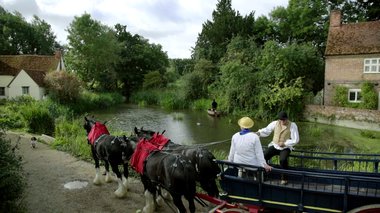
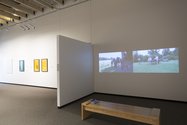
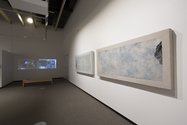
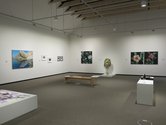
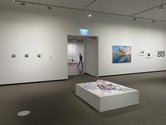
 Two Rooms presents a program of residencies and projects
Two Rooms presents a program of residencies and projects Advertising in this column
Advertising in this column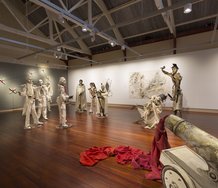
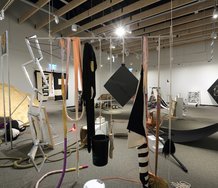
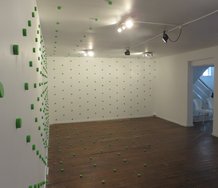
This Discussion has 1 comment.
Comment
Peter Ireland, 8:24 a.m. 29 May, 2017 #
Jonathan Mane-Wheoki's statement quoted by Nicholas Haig in the Suter review is either Holy Writ or contestable. It's odd that such a view might proceed from a commentator whose academic credentials were established on the basis of Victorian ecclesiastical architecture. Not so odd when a later need to establish Maori credentials became paramount. Those of us who knew the then Jonathan Mane [accent on the "e" of Mane"] at Canterbury in the later 1960s would recall his insistence on the accent on that final "e" as an acknowledgement of Reunion ancestry - his origins, apparently, as a person of colour - stressed even to the point of claiming Ambroise Vollard as a compatriot. Mane-Wheoki's ability to speak for Pakeha is on par with that of Pakeha to speak for Maori. Or Reunion Islanders.
Participate
Register to Participate.
Sign in
Sign in to an existing account.